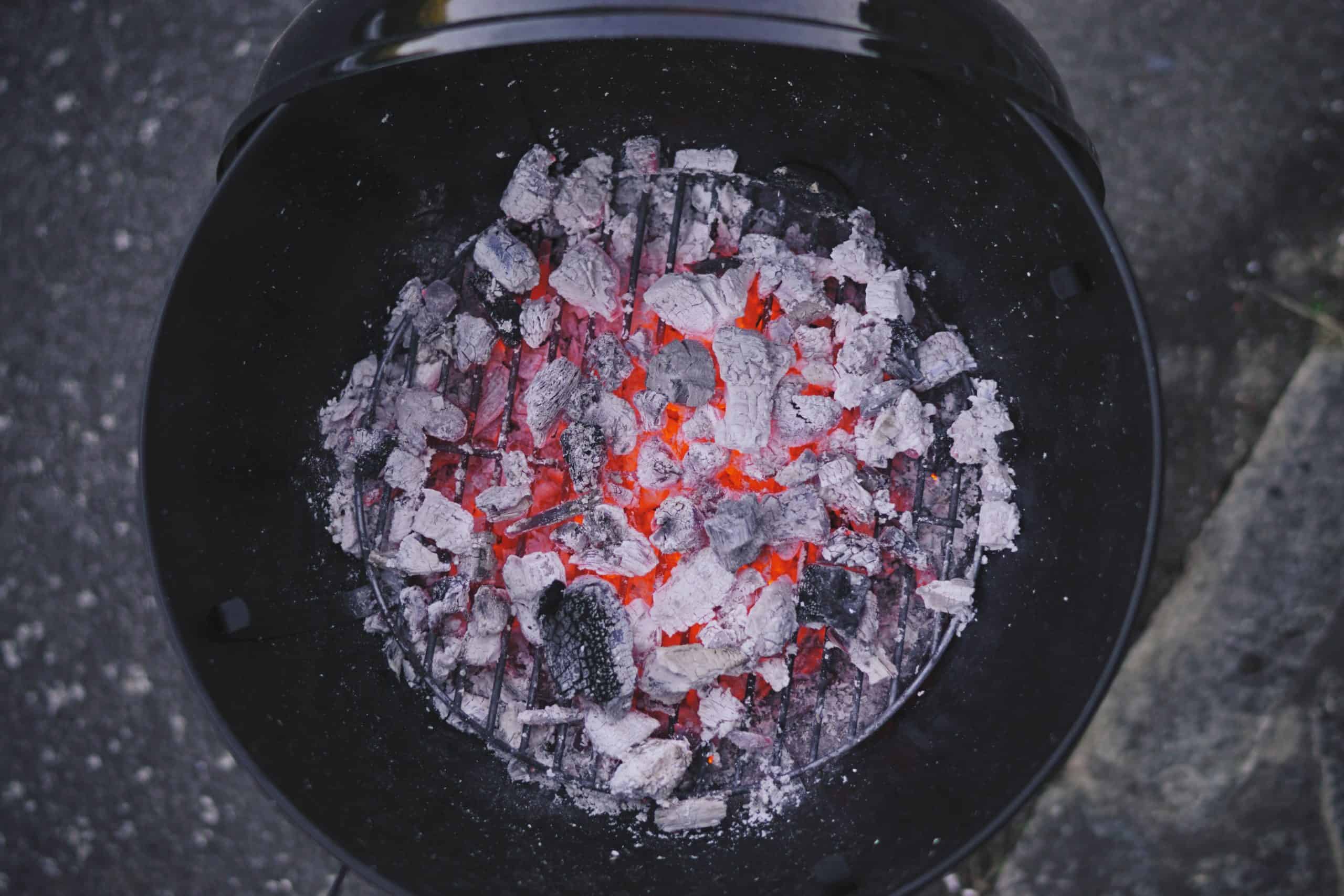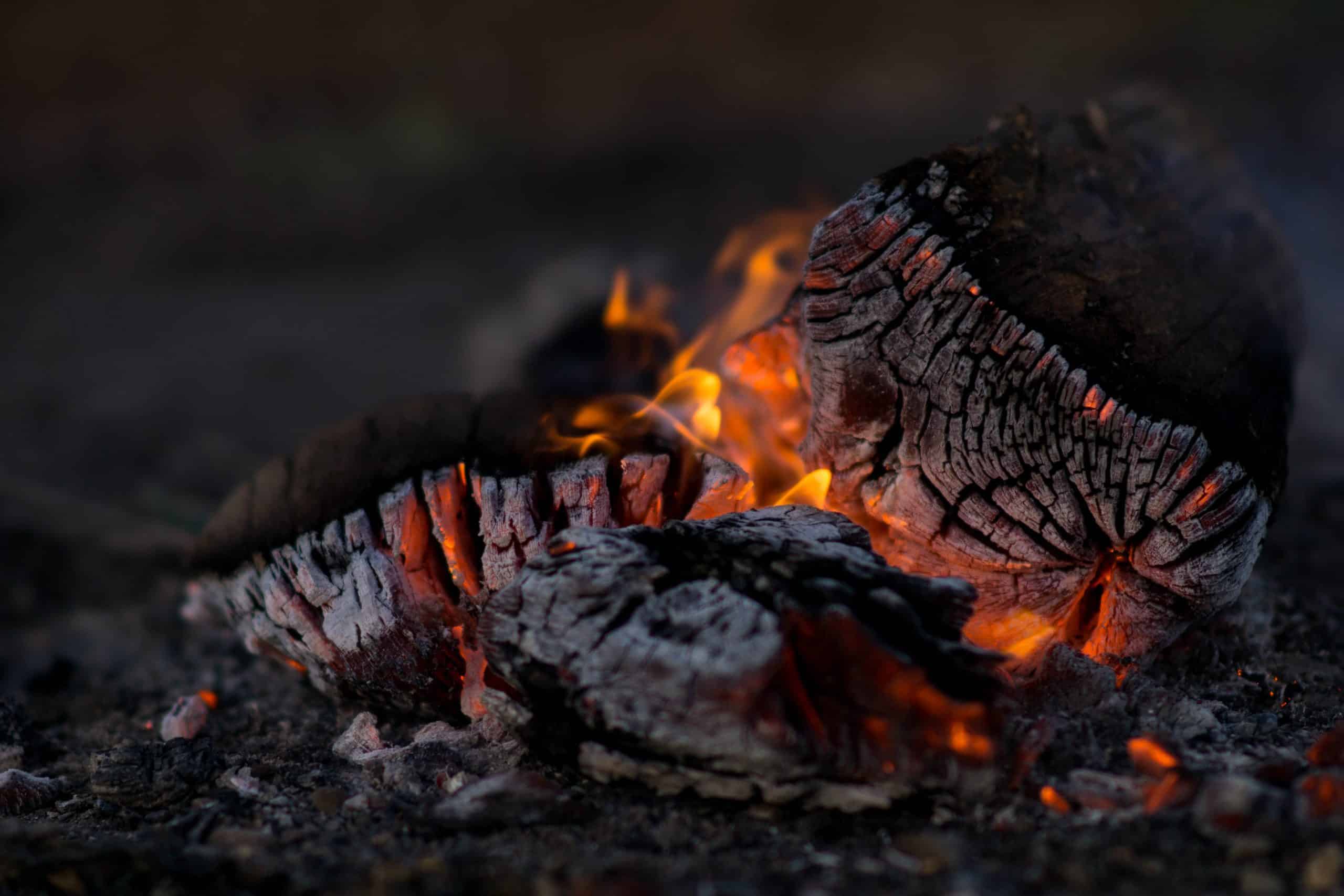Can you use charcoal indoors? You need to be careful, here’s why
Charcoal is a lightweight but dark carbon buildup prepared by expelling water and other evaporation constituents from various animal and (mostly) plant materials, like wood. It contains an amorphous or non-crystalline form of carbon when wood, bones, or any other organic material is heated in the absence of air and water.
It’s nice thing to know about how charcoal’s formed. But can you actually use charcoal indoors?

You can safely use charcoal indoors, but you have to have a safe way of containing both the heat and the smoke you get from burning the charcoal. You can use it for heating and of course, for cooking food indoors.
But I strongly advise you to only use it in a way where you can remove the smoke directly through pipes that go outside. Just opening a window or 2 won’t be safe, as you’ll read below.
Let’s talk about burning charcoal indoors. I’ve also found a few other ways for charcoal to be used indoors as well!

Check out our new cookbook
Bitemybun's family recipes with complete meal planner and recipe guide.
Try it out for free with Kindle Unlimited:
Read for freeIn this post we'll cover:
- 1 Why should charcoal be carefully used indoors?
- 2 What is charcoal burning?
- 3 Types of charcoal
- 4 The common uses of charcoal
- 5 How is charcoal used as fuel indoors?
- 6 Why should we use charcoal?
- 7 The indoor use of charcoal
- 8 How can charcoal be utilized for indoor cooking?
- 9 Which one is better: charcoal or gas?
- 10 Tips and techniques for indoor charcoal grilling
- 11 What are some of the most beneficial uses of charcoal?
- 12 Use charcoal safely
Why should charcoal be carefully used indoors?
In almost all of its forms, when set on fire, charcoal produces deadly levels of toxins and carbon monoxide. Carbon monoxide is a very toxic gas formed due to the incomplete combustion of carbon in the air.
When using charcoal indoors, this gas accumulates due to poor ventilation and circulation. Even if the windows or doors are left open, they don’t provide sufficient protection from the toxic gas produced.
This gas can spread quickly in the air. It also isn’t easy to remove via exhaust fans or any such thing.
Since it’s odorless, colorless, and non-irritating, it can go unnoticed, even when it’s spread around in an enclosed space.
This gas is lighter than pure air and can replace oxygen easily, so when consumed through breathing, it’s quickly absorbed by the lungs. The affected person may not even show any quick symptoms!
What is charcoal burning?
Charcoal is generally created by using moderate pyrolysis, which is the warming of wood or other natural materials without oxygen.
This procedure is called charcoal burning and the charcoal obtained as an end product mainly consists of carbon.
Types of charcoal
- Common charcoal: This is made of petroleum, coconut shell, coal, wood, and peat.
- Sugar charcoal: It’s obtained from the carbonization of sugar and is available in its purest form.
- Activated charcoal: It’s produced by heating common charcoal in the presence of a gas. It improves its efficiency in trapping chemical impurities.
- Lump charcoal: It’s obtained by burning wood at a slow pace in the absence of oxygen. Lump charcoal is usually made of hardwood material and produces less ash.
- Japanese charcoal: It’s a special form of charcoal that produces no smoke or smell due to a lack of pyroligneous acid. It’s further classified into white and black charcoal categories.
- Pillow-shaped briquettes: Briquettes are made of sawdust, wood byproducts, and some additives by compressing charcoal.
- Sawdust briquette charcoal: This is made by compressing sawdust without adding any additives or binders.
- Extruded charcoal: It’s made by extruding raw ground wood or carbonized wood without the use of binders.
The common uses of charcoal
Charcoal has been a fuel of choice for hundreds of years for various purposes. Its use ranged from medicine to art and dyes.
Here are some of its major uses to date:
- Creating black pigment by grinding it.
- Because of its large surface area, it’s used as a filter and catalyst for several purposes.
- Blacksmiths use it to provide sufficient heat to metals to mount their shapes.
- Cooking fuel to grill raw meat, such as barbeque.
- Production of black powder, which is used in firework material.
- Use in cosmetics because of its availability to absorb impurities at a micro-level.
- A catalyst for chemical reactions that need carbon to speed up the process.
- Filter in masks and other mouth protection equipment in the form of activated charcoal because of its highly absorbent properties.
- As a tool in arts, mainly for drawing purposes in the form of charcoal lead.
- Medication to treat gastric problems.
How is charcoal used as fuel indoors?
Charcoal is a strong fuel utilized for heating and cooking that’s made through the procedure of carbonization, which is where complex carbon substances (i.e. wood or different biomass) are separated through a moderate heating process into carbon and other volatile chemicals.
This form of fuel is better than wood because when similar amounts of charcoal and wood are burnt, charcoal creates double the heat than wood.
Charcoal delivers substantially less smoke than wood too. It’s a minimum fuel that’s more advantageous to deal with than wood.
So in a way, it’s better to use charcoal indoors.
Why should we use charcoal?
The main advantage of burning charcoal is that it requires little or no air, less water, and certain other components, which allows it to burn at a high temperature and still give off little smoke.
As compared to charcoal, burning wood creates dense smoke in large quantities, which creates air pollutants and soot. This is a collection of unburnt and impure carbon particles that cause various types of cancer and lung diseases.
The indoor use of charcoal
Charcoal has only a limited number of uses as an indoor item, but they’re very significant.
One major indoor use is heat generation for cooking food. Its other use is in a heater, where it can be burnt to keep the room nice and warm.
It can also be used in fireplaces or to produce heat anywhere else, even at a campsite.
Although it provides many indoor advantages , it has a lot of disadvantages as well. So it should be used in careful consideration.
How can charcoal be utilized for indoor cooking?
Charcoal grilling probably won’t offer a similar degree of comfort and accommodation as gas, yet it boasts one advantage that stands out above all others: its smoky barbeque flavor.
The dry, white-hot warmth of charcoal burns meat rapidly, making a crispy and smoky flavor.
Charcoal grilling requires additional time and consideration than gas, from building and lighting the briquettes to making sure the coals get hot, to dealing with the actual flame.
Since you can’t dial down the warmth of white-hot coals, it’s a decent technique to leave void spaces on the lower part of the grill underneath the cooking surface. These colder spaces give you better control, letting you burn your food on high heat at first before moving it to cooler parts of the grill to finish cooking.
Which one is better: charcoal or gas?

Additionally, charcoal grills are more affordable than gas grills. However, the expense of charcoal will increase throughout the years.
Charcoal grills are also more compact than gas grills. You can very easily put a sack of charcoal along with your grill in your car and take it with you to a party or the beach.
Also check out these indoor yakitori grills if you don’t mind electric cooking
Tips and techniques for indoor charcoal grilling
- It isn’t recommended to use flammable liquids to ignite the fire. For one, it’ll make a mess and your cooked food will taste like the fumes from the liquids.
- Using a good brand of charcoal makes a major difference. Cheap and inferior quality charcoal easily breaks down in the fire and an upgrade will last you a bit longer.
- Wait for the charcoal to become gray all over before you start cooking. This means that the fire is hot enough and ready to cook.
- Always have a spray water bottle and a fire extinguisher within your reach to deal with emergencies.
- Invest in a good grill with proper vents and parts. It won’t decay or rust, so it can last for a long period.
- Invest in a good instant red meat thermometer.
- Proper cleaning of the grill after use is necessary. Use oil and aluminum foil to keep your cooking easy and clean for those types of food that have a little more moisture.
- Be patient while burning charcoal. It usually takes longer than other fuels, but it gives food a better taste. So it’s worth the invested patience!
What are some of the most beneficial uses of charcoal?
Apart from all the health hazards and disadvantages of using charcoal, there are still some tips and tricks that can help you use charcoal indoors in a good way.
Below are a few very useful and inspiring ways you can take advantage of charcoal.
Boost your compost
Charcoal comprises of wood, which is (for the most part) carbon. It’s a fundamental component for making great fertilizer and compost.
Toss a couple of bits of the regular-style coal into your container of food scraps and yard clippings to boost your compost!
Freshen your air
In spaces that need air circulation, as in a closed storeroom or cellar, put out a few pieces of additive-free charcoal in a lidded plastic container and poke a couple of holes in it.
The dark pieces of charcoal will absorb nasty scents and dampness, leaving the area smelling clean and the air fresh.
Clean your ornaments
Sprinkle a touch of charcoal in any place you store your tools and nails in. Because of its good dampness retention, charcoal will help keep your tools rust-free.
You can also do this for your gardening tools. Each time you finish a sack of charcoal, pour the extra bits from the bottom of the pack into the pot where you stow your spades and weeding devices.
Because of charcoal, they’ll remain shinier!
Create art
Charcoal sticks have filled in as tools for artists for quite a long time, and these drawing instruments are nothing more than trimmed-down charcoal briquettes.
Indeed, even a standard charcoal piece can make a great drawing tool, should you be feeling creative.
Grab a piece when you’re feeling a lack of inspiration the next time you’re staring at your blank canvas. Or you can even use it to write a great welcoming message for visitors arriving at your grill party!
Use charcoal safely
Now you know that charcoal can be used indoors safely, albeit not usually for cooking. If you do choose to cook with charcoal inside, make sure you only do so if you have an extractor fan. Otherwise, cracking open windows and doors just isn’t enough.
Check out this article on Japanese Binchotan charcoal, which is just the best when grilling on high heat.
I also have an article dedicated to the use of Konro grills and binchotan indoors if you want to learn more about that.
Check out our new cookbook
Bitemybun's family recipes with complete meal planner and recipe guide.
Try it out for free with Kindle Unlimited:
Read for freeJoost Nusselder, the founder of Bite My Bun is a content marketer, dad and loves trying out new food with Japanese food at the heart of his passion, and together with his team he's been creating in-depth blog articles since 2016 to help loyal readers with recipes and cooking tips.
